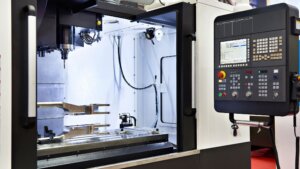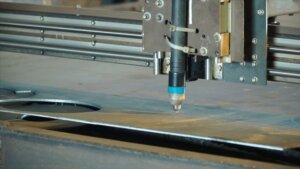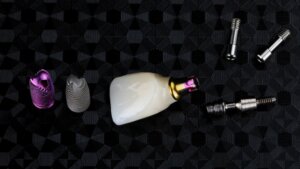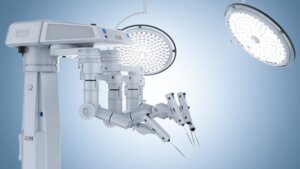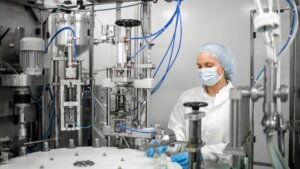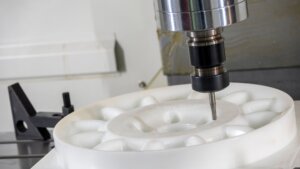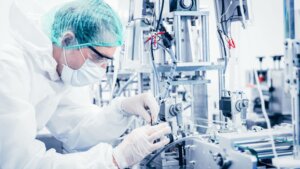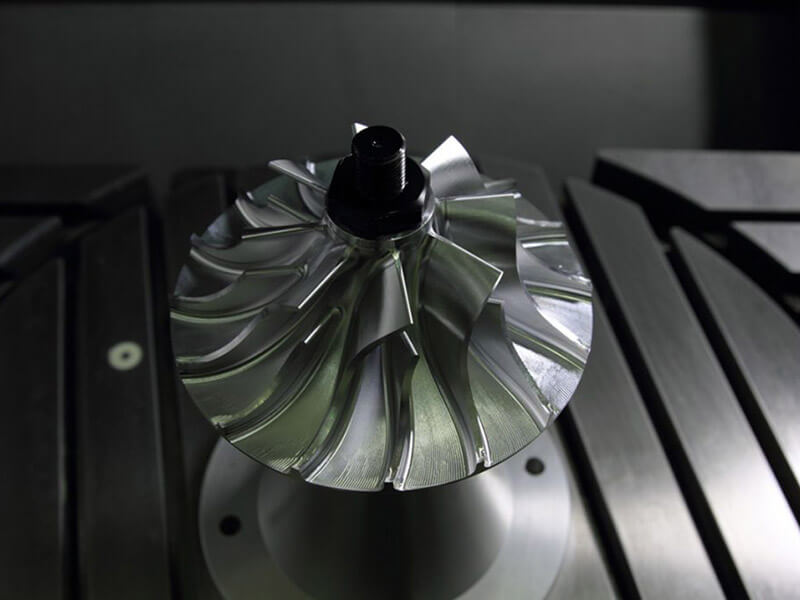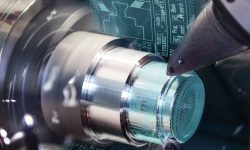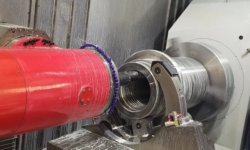In the realm of medical advancements, CNC machining revolutionize the manufacturing of medical devices with unparalleled precision and reliability.
Below you will go into the world of CNC machining for the medical industry, exploring its suitability, methods, materials, applications, advantages, challenges, and guidelines for selecting the best CNC machine suppliers.
What Makes CNC Machining Suitable for Medical Industry and Applications?
CNC (Computer Numerical Control) machining has become indispensable in the medical industry due to its ability to produce parts with high precision, consistency, efficiency, and adaptability to a wide array of materials.
What Are the CNC Machining Methods Commonly Used in the Medical Sector?
CNC machining encompasses various techniques, each offering unique advantages for medical device manufacturing.
Here is an overview of the most prevalent CNC machining methods in the medical sector, highlighting their operations, applications, and benefits.
CNC Milling
CNC milling involves the use of rotary cutting tools to remove material from a workpiece, producing complex parts with high precision. It is widely used for manufacturing a broad spectrum of medical devices, from implants to surgical instruments.
- Prototyping of medical devices
- Production of orthopedic implants such as knee and hip replacements
- Manufacturing of surgical instruments and endoscopic tools
- Creation of components for diagnostic equipment
CNC Turning (Lathe)
CNC turning utilizes a lathe to rotate a workpiece against a cutting tool, shaping it into the desired form. This method is ideal for producing cylindrical parts, such as pins, screws, and rods, used in various medical applications.
- Fabrication of pins and screws for orthopedic implants
- Production of components for minimally invasive surgical instruments
- Manufacturing of custom hardware for medical devices
5-Axis CNC Machining
5-axis CNC machining offers enhanced flexibility and precision by operating on five different axes simultaneously. This capability allows for the creation of complex geometries with tight tolerances, essential for intricate medical devices.
Complex surgical instruments requiring high precision
- Advanced orthopedic implants with intricate shapes
- Customized medical components with complex geometries
Swiss CNC Machining
Swiss CNC machining is known for its precision in producing small, complex parts. It is particularly suited for manufacturing high-volume, intricate components with tight tolerances, such as those found in minimally invasive surgical tools.
- Precision components for minimally invasive surgical instruments
- Detailed parts for diagnostic devices and electronic medical equipment
- High-volume production of small, complex medical components
Wire EDM (Electrical Discharge Machining)
Wire EDM uses electrical discharges to cut conductive materials with high precision. This method is ideal for materials that are difficult to machine with traditional methods, providing fine detailed cuts without inducing stress on the part.
- Precision cutting of components for cardiovascular devices
- Manufacturing of intricate parts for surgical instruments and implants
- Creation of custom shapes for medical device prototypes
Micro-Machining
Micro-machining focuses on the production of extremely small parts, often requiring microscopic examination. This technique is critical for the medical industry, where miniaturization of devices is a growing trend.
- Microfluidic devices for laboratory diagnostics
- Miniature components for endoscopic tools
- Small-scale prototypes for medical device development
Laser Cutting and Engraving
Laser cutting and engraving offer precise cutting and marking capabilities for a variety of materials. This method is used for both the fabrication and identification of medical parts and devices.
- Precise cutting of medical grade plastics and metals
- Engraving of identification marks and instructions on medical devices
- Custom shaping of components for prosthetics and implants
Photochemical Machining (PCM)
PCM uses chemical etchants to remove material and create detailed parts without mechanical stress. This process is suitable for thin metal parts requiring high precision, such as meshes and filters.
- Production of precision filters for medical devices
- Manufacturing of detailed metal components for implants
- Creation of custom meshes for surgical applications
Ultrasonic Machining
Ultrasonic machining combines high-frequency vibrations with an abrasive slurry to remove material. It is effective for hard, brittle materials like ceramics and glass, commonly used in medical device manufacturing.
- Machining of ceramic components for dental and orthopedic implants
- Precision shaping of glass parts for diagnostic equipment
- Custom fabrication of hard, brittle materials for medical devices
CNC Grinding
CNC grinding uses abrasive techniques to achieve fine surface finishes and tight tolerances. It is essential for the final shaping and finishing of parts, ensuring their functionality and compatibility in medical applications.
- Surface finishing of orthopedic implants for improved fit and function
- Precision grinding of surgical instruments for enhanced performance
- Final shaping of components for diagnostic and therapeutic devices
Which Materials Are Predominantly Used in Medical CNC Machining?
The selection of materials for medical CNC machining is critical, as it must meet the specific requirements of the medical application, including biocompatibility, strength, and corrosion resistance.
This section explores the most commonly used materials in medical CNC machining and their applications.
Metals
Metals are widely used in medical CNC machining for their strength, durability, and biocompatibility.
Key metals include:
Stainless Steel (e.g., 316L, 304)
Stainless steel is favored for its corrosion resistance and is commonly used in surgical instruments, implants, and diagnostic equipment.
Titanium (e.g., Ti 6Al-4V)
Titanium is renowned for its strength, lightweight, and biocompatibility, making it ideal for orthopedic implants and surgical tools.
Cobalt-Chrome Alloys (e.g., CoCr)
Cobalt-chrome alloys offer excellent wear resistance and are used in high-stress implants such as hip and knee replacements.
Aluminum (e.g., Al 6061, Al 7075)
Aluminum is used for its lightweight and corrosion resistance in non-implantable medical devices and equipment housings.
Nickel-Titanium Alloys (Nitinol)
Nitinol is known for its superelasticity and shape memory, used in stents, catheters, and orthodontic devices.
Plastics
Plastics are chosen for their versatility, chemical resistance, and ease of sterilization. Important plastics in medical machining include:
PEEK (Polyether Ether Ketone)
PEEK is used for its high strength, chemical resistance, and biocompatibility in implants and surgical instruments.
Polycarbonate (PC)
Polycarbonate is favored for its clarity and impact resistance, commonly used in medical device housings and protective covers.
Polyethylene (e.g., UHMWPE)
UHMWPE is widely used in orthopedic implants for its wear resistance and low friction.
Polypropylene (PP)
Polypropylene is used for its chemical resistance and flexibility in containers, tubing, and non-implantable components.
Acrylic (PMMA)
Acrylic is used for its clarity and ease of fabrication in lenses, diagnostic device components, and surgical instrument handles.
PTFE (Polytetrafluoroethylene)
PTFE is chosen for its low friction and chemical resistance, used in catheters, gaskets, and seals.
Ceramics
Ceramics are used in medical CNC machining for their biocompatibility, hardness, and wear resistance. Key ceramics include:
Alumina (Aluminum Oxide)
Alumina is used in dental and orthopedic implants for its hardness and biocompatibility.
Zirconia (Zirconium Oxide)
Zirconia is favored for its strength and aesthetics in dental crowns and implants.
Silicon Nitride
Silicon nitride is used for its wear resistance and biocompatibility in spinal and orthopedic implants.
What are the applications of CNC machine in medical industry?
As we discuss the various applications of CNC machining, you’ll discover its role in both established and innovative medical practices, highlighting its contribution to advancing patient care and medical science.
Common Applications
Prototyping of Medical Devices
Prototyping is a critical phase in the development of medical devices, allowing engineers and designers to test the form, fit, and function of their innovations. CNC machining accelerates this process by quickly turning digital designs into tangible prototypes. This rapid prototyping capability enables iterative testing, ensuring the final product meets the stringent requirements of the medical field.
Surgical Instruments
Precision is paramount when it comes to surgical instruments. CNC machining produces tools like scalpels, forceps, and clamps with the exactness needed for delicate surgical procedures. These instruments are not only crafted to precise specifications but also designed to withstand the rigors of sterilization and repeated use.
Orthopedic Implants
Orthopedic implants, including hip and knee replacements, are manufactured with CNC machining to achieve the complex geometries and tight tolerances required for these critical components. The ability to work with biocompatible materials such as titanium and PEEK ensures these implants can safely integrate with the human body, providing durability and comfort to patients.
Dental Implants and Tools
The dental sector relies on CNC machining for the creation of implants, crowns, and tools used in dental surgeries and procedures. The precision of CNC machining supports the customization needed for individual patient anatomy, enhancing the success rates of dental restorations and surgeries.
Prosthetics
Prosthetics benefit significantly from the customizability offered by CNC machining. By producing components tailored to the specific needs of users, CNC technology helps in creating prosthetics that are more comfortable, functional, and lifelike, thereby improving the quality of life for individuals with limb loss.
Diagnostic Equipment
From MRI machines to blood analyzers, diagnostic equipment contains numerous CNC-machined parts. The precision and reliability of these components are crucial for accurate diagnosis and patient monitoring, making CNC machining an essential process in their manufacturing.
Cardiovascular Devices
Cardiovascular devices, such as stents and heart valves, require the utmost precision and biocompatibility. CNC machining meets these needs by producing components with the necessary precision and using materials that are safe for long-term contact with blood and tissue.
Electronic Medical Equipment
CNC machining contributes to the manufacturing of electronic medical equipment by creating durable and precise enclosures, mounts, and connectors. This ensures that devices like pacemakers, monitors, and imaging machines perform reliably in critical healthcare settings.
Endoscopic Surgical Tools
Endoscopic surgical tools, designed for minimally invasive procedures, benefit from the miniaturization capabilities of CNC machining. These tools require intricate features and high precision to navigate through small incisions, reducing patient recovery times and improving surgical outcomes.
Ophthalmic Devices
In the field of ophthalmology, devices ranging from laser eye surgery machines to diagnostic tools for vision testing are produced with components machined to exact specifications. CNC machining allows for the high degree of accuracy needed in devices that diagnose and treat delicate eye tissues.
Orthopedic Hardware
CNC machining manufactures the screws, plates, and rods used in orthopedic surgery. These components must fit precisely to support bone healing and alignment, showcasing CNC technology’s ability to produce parts that meet rigorous medical standards.
Emerging Applications
Customized Patient Implants
The demand for personalized healthcare solutions has led to the rise of customized patient implants. CNC machining stands at the forefront of this revolution, offering the capability to produce implants tailored to the individual’s anatomy.
This personalization enhances the compatibility and effectiveness of implants, significantly improving patient outcomes. By utilizing advanced materials and precision machining, these custom implants are designed for optimal integration with the body, offering solutions that are not just functional but also highly individualized.
Wearable Medical Devices
Wearable medical devices represent a significant leap towards more proactive and preventive healthcare. Through CNC machining, manufacturers can create complex, durable components for devices that monitor vital signs, manage chronic conditions, and even administer medication.
The precision of CNC machining ensures these wearable devices are not only reliable but also comfortable and discreet for everyday use, empowering patients to take an active role in their health management.
Robotic Surgery Components
Robotic surgery has transformed surgical procedures, offering higher precision, reduced recovery times, and minimized risk of infection. CNC machining is key to fabricating the intricate components that make up these sophisticated robotic systems.
From articulating arms to miniature surgical instruments, CNC technology enables the creation of parts with the exacting tolerances and smooth finishes essential for the delicate nature of surgical robotics.
Bioresorbable Implants
Bioresorbable implants, which naturally dissolve in the body after fulfilling their purpose, are a significant advancement in medical treatment. CNC machining’s ability to work with a variety of biocompatible materials makes it ideal for producing these implants.
This technology ensures that implants are manufactured to precise specifications, providing support where needed without the long-term complications associated with permanent implants.
Microfluidic Devices
In the field of diagnostics, microfluidic devices have emerged as a tool for precise fluid manipulation at the microscale. CNC machining plays a critical role in creating the complex channels and chambers of these devices, which are used for a range of applications from drug delivery systems to lab-on-a-chip technologies.
The precision and versatility of CNC machining facilitate the miniaturization and integration required for these innovative devices.
Smart Implants
The integration of sensors and connectivity into implants is a burgeoning area of medical technology. Smart implants, enabled by CNC machining, offer real-time monitoring of health metrics and the potential for remote adjustments to treatment.
This capability not only improves patient care but also opens new avenues for personalized medicine, where treatments can be adjusted based on the immediate feedback provided by the implant.
3D Printed Metal Components
While 3D printing is a distinct manufacturing process, it often works hand-in-hand with CNC machining to produce metal components for medical use. This combination allows for the fabrication of complex geometries that are difficult to achieve with traditional machining alone.
CNC machining refines 3D printed components, ensuring they meet the strict tolerances and surface finishes required for medical applications. This synergy between 3D printing and CNC machining is expanding the boundaries of what’s possible in medical manufacturing.
What Are the Advantages of Using CNC Machining for the Medical Industry?
The 7 main advantages that make CNC machining so beneficial to the healthcare industry are:
- Precision and Accuracy: CNC machining provides unmatched precision, essential for medical devices that must adhere to strict tolerances. This accuracy is crucial in applications ranging from surgical instruments to implants, ensuring they perform safely and effectively within the human body.
- Repeatability: The ability to replicate parts with exact precision is vital in the medical industry, where consistency in production can directly impact patient outcomes. CNC machining excels in producing identical components, batch after batch, reducing variability and enhancing the reliability of medical devices.
- Flexibility in Material Choice: With CNC machining, manufacturers are not limited in their choice of materials. Whether it’s biocompatible metals like titanium and stainless steel or advanced plastics and ceramics, CNC machines can handle a wide range of materials, allowing for the creation of devices that meet the diverse needs of the medical sector.
- Customization: The medical field often requires personalized solutions to meet individual patient needs. CNC machining facilitates the customization of implants and prosthetics, offering tailored healthcare solutions that improve patient comfort and recovery times.
- Reduced Production Time: In the fast-paced medical industry, time is of the essence. CNC machining streamlines the production process, from prototype to final product, accelerating the development cycle of new medical devices and enabling rapid response to market demands.
- High Compatibility with CAD/CAM: Integration with computer-aided design (CAD) and computer-aided manufacturing (CAM) software allows for seamless translation of digital designs into physical parts. This compatibility streamlines the design process, enhances design flexibility, and reduces errors, leading to faster innovation in medical device manufacturing.
- Minimized Human Error: The automated nature of CNC machining significantly reduces the risk of human error in the production process. This automation ensures that medical devices are manufactured with consistent quality, enhancing patient safety and device reliability.
What are Important Considerations When Choosing Materials for Medical CNC Machining?
Selecting the right material transcends mere preference—it’s about ensuring the safety, functionality, and longevity of medical devices.
Each material brings its unique properties to the table, necessitating a thoughtful analysis of their application within the medical field.
Here, we outline key considerations that guide the selection process, ensuring that every material choice aligns with the specific demands of medical device manufacturing.
Considering Long-Term Body Contact
For devices intended for prolonged exposure within the human body, such as implants, material biocompatibility is paramount. These materials must not elicit any adverse biological responses and should maintain their integrity over time without degrading or leaching harmful substances.
Metals like titanium and certain polymers that can withstand the physiological environment are often preferred for their proven track record of safety and durability in long-term body contact applications.
Assessing Chemical Resistance
Medical devices often encounter harsh chemical environments, whether through exposure to bodily fluids or during the sterilization process. Materials chosen must resist these chemicals to maintain their structural integrity and functionality.
This resistance is crucial for components of drug delivery systems and surgical tools, where material breakdown could have serious implications for patient health.
Evaluating Radiation Resistance
Radiation resistance is a critical factor for materials used in devices that undergo sterilization through gamma radiation or electron beams. These materials must retain their physical and chemical properties post-sterilization to ensure the device’s effectiveness is not compromised.
Selection focuses on materials that can withstand high doses of radiation without deteriorating.
Ensuring Sterilizability
The ability to be sterilized without degrading is a non-negotiable requirement for materials in medical devices. They must endure repeated sterilization cycles—whether through heat, chemicals, or radiation—without alteration.
Materials that can withstand these rigorous processes are essential to prevent contamination and ensure patient safety.
Compatibility with Drug Delivery
Materials used in drug delivery systems must not react with the medications they convey. This non-reactivity ensures the drug’s efficacy is not diminished upon contact. The selection process involves identifying materials that are inert and can interact safely with a wide range of pharmaceuticals, providing a consistent delivery mechanism.
Suitability for Artificial Joints
Artificial joints demand materials that can withstand repetitive motion and bear significant loads without wearing down. These materials must also be biocompatible to avoid rejection by the body. Alloys known for their strength, durability, and compatibility, such as cobalt-chromium and titanium, are commonly used in joint replacements.
Appropriateness for Prosthetics
For prosthetic devices, materials need to offer an optimal balance of weight, strength, and flexibility to mimic the function of natural limbs.
Moreover, the materials must be comfortable for the wearer, implying a need for lightweight yet durable options that can be customized to fit individual needs. Advances in materials science have broadened the options available, including high-performance polymers and composites that meet these criteria.
What are Top Tips for Designing CNC Machined Medical Parts?
Designing CNC machined medical parts requires a nuanced approach that balances functionality, patient safety, and manufacturability.
Here, we explore key strategies to optimize design for medical CNC machining, ensuring that the final products meet the rigorous demands of the medical field.
Streamlining Design Complexity
In the world of medical CNC machining, simplifying design without compromising functionality can significantly enhance manufacturability and reduce production costs. A streamlined design minimizes the risk of manufacturing errors and facilitates easier assembly of parts. When you’re conceptualizing medical devices or components, consider how each feature contributes to the device’s purpose and strive to reduce unnecessary complexities.
Incorporating High-Visibility Colors
Utilizing strong, high-visibility colors for medical parts isn’t just about aesthetics; it serves a practical purpose. Bright colors can help differentiate tools during surgical procedures, reduce the risk of misidentification, and enhance safety. For parts that will be used in high-stakes environments, selecting materials that can be produced or coated in vibrant colors can be a critical design consideration.
Enhancing Visual Appeal
While functionality takes precedence, the visual appeal of medical devices plays a crucial role in user acceptance and brand differentiation. A well-designed medical device that looks sleek and modern can instill confidence in its users, whether they are medical professionals or patients. Consider the finish, texture, and overall form factor of the part in your design to make it not only functional but also visually pleasing.
Designing for Portability
For medical devices intended for use outside of traditional healthcare settings, portability becomes a key design factor. Devices should be lightweight, compact, and easy to carry or transport. This is especially important for emergency medical equipment, home healthcare products, and wearable medical devices. Integrating features that enhance portability without compromising performance can significantly impact the device’s usability and accessibility.
Simplifying Maintenance
Ease of maintenance is a critical design aspect for medical devices, ensuring they can be cleaned, sterilized, and serviced with minimal effort. Design parts with smooth surfaces, minimal crevices, and easy disassembly features to facilitate thorough cleaning and maintenance. This consideration not only extends the device’s lifespan but also upholds the stringent hygiene standards required in medical settings.
Ensuring Ease of Sterilization
Designing medical parts with sterilization in mind is paramount, as these components often require frequent cleaning to eliminate the risk of infection. Select materials and design shapes that can withstand various sterilization methods, including autoclaving, chemical disinfectants, and radiation. Features such as rounded corners and the absence of unnecessary indentations can prevent the accumulation of bacteria and make sterilization more effective.
Incorporating User-Friendly Features
Medical devices should be intuitive and straightforward to use, even under stressful conditions. Incorporating user-friendly features such as ergonomic grips, clearly labeled controls, and simple interfaces can enhance the device’s functionality and safety. Consider the end user’s experience in every aspect of the design to ensure the device can be operated efficiently and accurately.
Prioritizing Durability in High-Wear Applications
For medical parts that will undergo frequent use or are subject to significant wear and tear, durability is a key design consideration. Choosing materials known for their strength and resistance to wear can prolong the life of the device, ensuring it remains reliable over time.
Additionally, designing for ease of replacement for high-wear components can streamline maintenance and reduce long-term costs.
How to Find the Best Medical CNC Machining Supplier?
Identifying the most adept medical CNC machining supplier is important, not just for the seamless production of medical devices but also for ensuring these components adhere to the stringent standards required by the healthcare industry.
Here are three critical aspects to consider when selecting a supplier that can meet the high-quality expectations of medical CNC machining.
ISO 13485 and 9001 Certified
The foundation of a trustworthy medical CNC machining supplier lies in their certifications. ISO 13485 and 9001 certifications are not merely badges of honor; they signify a supplier’s commitment to upholding the highest quality management systems.
These certifications ensure that the supplier consistently meets customer and regulatory requirements, specifically in the manufacturing of medical devices. When evaluating potential suppliers, verifying these certifications should be your initial step.
Experienced Experts
The complexity of medical devices requires a team not just skilled in CNC machining, but specialized in the medical field. Look for a supplier with a track record of success in medical projects, indicating their team possesses the nuanced expertise needed to navigate the unique challenges of medical manufacturing.
Experienced professionals understand the critical nature of their work, applying precision and care to each project to meet the exacting standards of the medical industry.
Strict Quality Inspection System
Quality cannot be compromised in medical device manufacturing. A robust quality inspection system is essential to ensure that every part meets stringent specifications and functions flawlessly. A top-tier supplier will have comprehensive quality control measures in place, from initial material inspection to final product testing.
This meticulous approach to quality assurance is crucial for producing medical devices that are reliable, safe, and effective.
Highlighting 3ERP’s Quality Service
3ERP stands out as a supplier with years of experience in crafting CNC machined parts for the medical and healthcare field, including medical devices, equipment components, anatomical models, and more. Their expertise spans from early-stage prototypes to final parts production, showcasing their ability to realize complex designs efficiently.
With 3ERP, products reach the market faster, risks are minimized, and production processes are streamlined through on-demand production at competitive prices. Their commitment to quality is evident in their ISO 9001:2015 certification and around-the-clock engineering support, ensuring production-grade products that meet and exceed expectations.
Conclusion
The expansion of CNC machining in the medical industry is a testament to the technology’s versatility, precision, and reliability. As medical device manufacturing evolves, the demand for suppliers that can deliver high-quality, compliant, and innovative solutions will continue to grow.
Suppliers like 3ERP are leading the way, demonstrating that with the right expertise, certifications, and quality control systems, it’s possible to meet the industry’s rigorous standards.
As CNC machining technology advances, its application in the medical field is set to broaden, promising enhanced capabilities for medical device innovation and production.


